Brand tradition: the Volvo XC90 paves the way to the future
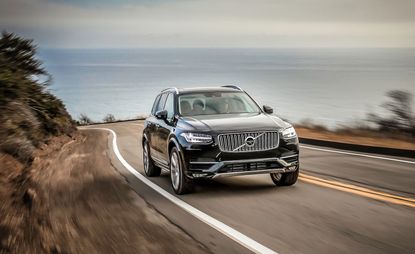
Barely six months after its launch, and the new Volvo XC90 continues to pick up auto show awards, most of them rewarding the Swedish manufacturer's ongoing commitment to safety. In that respect, Volvo's newest model upholds a company tradition, burnishing the long-held perception that the brand makes some of the safest cars on the road.
Get behind the wheel of this titanic and very solid-feeling SUV and you have little doubt you're in safe hand should your own somehow let you down, but there are also other factors at play. The XC90's arrival was well heralded and long overdue. Volvo can lay some claim to inventing the full-size family SUV with the original model, opening the floodgates to a market sector that now dominates the sales charts. But whilst the rivals that came after busied themselves with translating their brand attributes to this new genre of vehicles, Volvo has been largely unburdened by the need to create SUVs that are ultimate driving machines or the embodiment of contemporary luxury.
The company has ploughed a very individual furrow since it built its first cars in 1927 and although fortunes and ownership has been varied, it has stuck to its guns as a purveyor of sober, pragmatic and safe automobiles, agnostically distinct from traditionally automotive brand attributes. Since its acquisition by the Chinese conglomerate Geely in 2010, there's been a generous injection of cash to refresh the entire range and catapult Volvo into a new era.
The XC90 spearheads this technological assault. The car it replaced was well loved, sold well but was long in the tooth, so a new model was first on Geely's to-do list. Big and handsome, the XC90 is light years ahead of its predecessor in terms of dynamics, driver feedback and cabin ambience. The latter is focused on an enormous portrait-shaped touch screen, one of the best-ever automotive integrations of the technology with a genuinely intuitive interface.
Technology is Volvo’s new secret weapon. With an image shaped by safety and sober, elegant design, and an inner core of Scandinavian individuality and eccentricity, the company has quietly pushed an agenda that diminishes the totemic qualities of driving dynamics in favour of integrated, automated safety systems.
In many respects, the XC90 is a Trojan horse for driverless cars. Volvo has already designated a section of Swedish highway to trial their systems and has also stepped up and said it’ll take liability for any accidents deemed to have been caused by its cars. Right now, the XC90’s safety systems will slow and stop the car in the event of an imminent collision, as well as gently steer itself to keep you within the white lines. Volvo is far from unique in providing these abilities, but by self-consciously disassociating the act of ‘driving’ from the benefits of travelling in a car it is prepping the way for a future when we’ll hopefully trust Volvo to keep us in safe hands.
Over the next few years, Volvo will push further and further into this relatively uncharted world, although the sensor-laden snouts of its competitors are snapping at its bumpers. The new S90, due later this year, will be even more laden with tech, while the recent Concept 26 interior showcased a transformable Volvo of the future, with unfolding screens, reclining seats and a cabin that reconfigures itself to accommodate new ways of occupying yourself as the car drives itself. Last year’s ‘Excellence Concept’ also hinted at a new generation of interior design, taking aim at the 'private-jet-on-land' ambience currently dominated by high-end German limousines. Volvo has also announced the integration of Apple CarPlay into the XC90, a seamless way of bringing iPhone functionality to its own big screen.
With the XC90 and soon the S90 Volvo will be swimming in status-infested waters. Nevertheless, it believes fervently that our hang-ups over driving dynamics, sporting abilities and motorsport heritage are all going to undergo a pretty fundamental shift over the next couple of generations. By the time Volvo celebrates the centenary of its first production car in 2027, the automotive landscape might have shifted definitively in its favour.

Volvo's newest model upholds a company tradition, burnishing the long-held perception that the brand makes some of the safest cars on the road
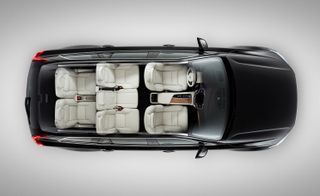
Large and handsome, the XC90 is light years ahead of its predecessor (the original XC90) in terms of dynamics, driver feedback and cabin ambience
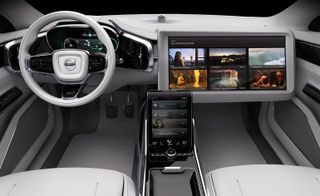
The latter is focused on a portrait-shaped touch screen, one of the best-ever automotive integrations of the technology, with a genuinely intuitive interface
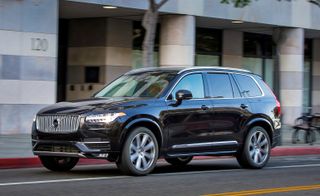
Volvo firmly believes that our hang-ups over driving dynamics, sporting abilities and motorsport heritage are all going to undergo a pretty fundamental shift over the next couple of generations
INFORMATION
For more information, visit Volvo’s website
Wallpaper* Newsletter
Receive our daily digest of inspiration, escapism and design stories from around the world direct to your inbox
Jonathan Bell has written for Wallpaper* magazine since 1999, covering everything from architecture and transport design to books, tech and graphic design. He is now the magazine’s Transport and Technology Editor. Jonathan has written and edited 15 books, including Concept Car Design, 21st Century House, and The New Modern House. He is also the host of Wallpaper’s first podcast.
-
 The 2024 Ivor Novello nominations for songwriting have been revealed
The 2024 Ivor Novello nominations for songwriting have been revealed77 British and Irish songwriters and composers make up this year's nominees, announced tonight at London's Groucho Club
By Charlotte Gunn Published
-
 Why Bollinger’s La Grande Année 2015 champagne is worth celebrating
Why Bollinger’s La Grande Année 2015 champagne is worth celebratingChampagne Bollinger unveils La Grande Année 2015 and La Grande Année Rosé 2015, two outstanding cuvées from an exceptional year in wine-making
By Melina Keays Published
-
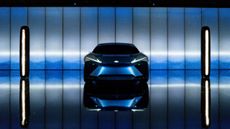 Lexus installation explores time at Milan Design Week 2024
Lexus installation explores time at Milan Design Week 2024Lexus brought designer Hideki Yoshimoto’s ‘Beyond the Horizon’ to Milan’s Art Point, part of its ongoing series of collaborations with Fuorisalone
By Nargess Shahmanesh Banks Published
-
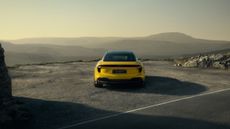 24 transportation design innovations for 2024
24 transportation design innovations for 2024From electric cars to new airports and sports boats, here’s a non-exhaustive list of 24 of the most interesting transportation design innovations to expect in the coming year
By Jonathan Bell Published
-
 Volvo EM90 is the brand’s all-electric first foray into the Multi-Purpose Vehicle
Volvo EM90 is the brand’s all-electric first foray into the Multi-Purpose VehicleSo far only China will get the new Volvo EM90 MPV; we think it has global potential
By Jonathan Bell Published
-
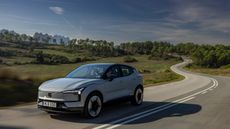 New downsized Volvo EX30 is the brand’s most drivable car – is it also its most desirable?
New downsized Volvo EX30 is the brand’s most drivable car – is it also its most desirable?If you’re searching for an EV that’s small on footprint – both physically and environmentally – the new Volvo EX30 is definitely worth a closer look
By Jonathan Bell Published
-
 Volvo EX30 squeezes new materials and world-leading safety into a compact EV
Volvo EX30 squeezes new materials and world-leading safety into a compact EVThe new Volvo EX30 is the smallest car in Volvo’s range. The full electric SUV provides a compelling mix of forward-thinking interior design with innovative materials and Google technology
By Jonathan Bell Published
-
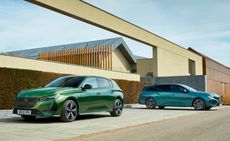 Peugeot’s sparky 308 gets hybrid power and handsome lines
Peugeot’s sparky 308 gets hybrid power and handsome linesThe Peugeot 308 proves that mass-market design needn’t be dull, blending hybrid power with sharp lines and excellent detailing
By Jonathan Bell Published
-
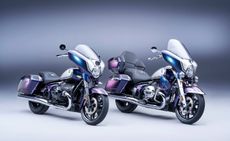 BMW Motorrad brings out the big guns for its newest cruisers
BMW Motorrad brings out the big guns for its newest cruisersBMW Motorrad R 18 Bagger and Transcontinental set the tone for high-voltage cruising with a brand collaboration with speaker specialist Marshall
By George Chapman Last updated
-
 Dacia’s new Manifesto concept is a true outdoor utility vehicle
Dacia’s new Manifesto concept is a true outdoor utility vehicleUtilitarian auto brand Dacia sets a bold new agenda with its Manifesto, a concept car pitched at the active outdoor market
By Jonathan Bell Last updated
-
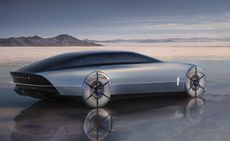 The sun sets on traditional supercars at California’s Monterey Car Week
The sun sets on traditional supercars at California’s Monterey Car WeekMonterey Car Week, the world’s most prestigious car gathering, is showcasing ever-more extravagant special editions, coachbuilt cars and all-new electric concepts. Here are seven key machines from 2022
By Rory FH Smith Last updated